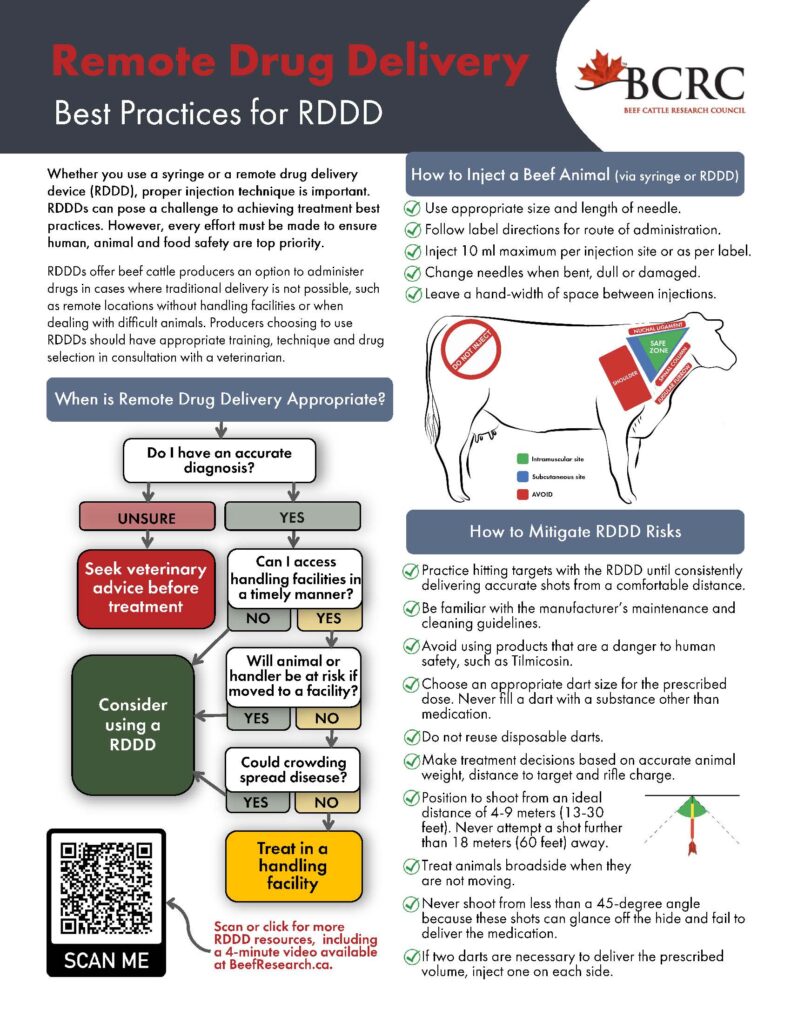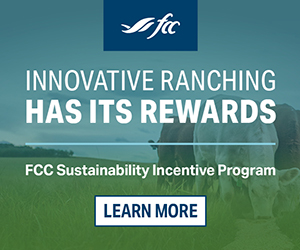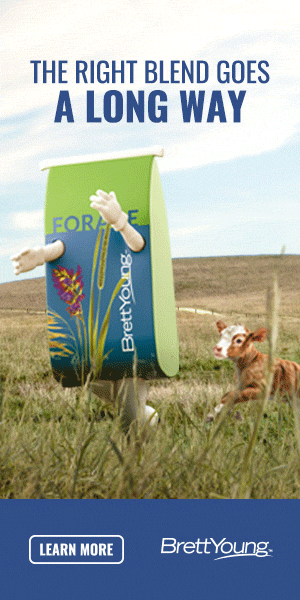AB Direct - Steers
Rail: ---
AB Direct - Heifers
Rail: ---
US Trade- Steers
Rail: ---
US Trade - Heifers
Rail: ---
Canadian Dollar
0.15

Ropes, chutes, or darts? How to safely treat sick cattle on pasture
This article was originally posted on the Beef Cattle Research Council’s website on May 30, 2024.
There is no more idyllic scene than a herd of cattle on a lush green pasture in the Canadian landscape. Everyone loves to see the hillsides dotted with animals enjoying the benefits of May rainfall. As satisfying as it is seeing those cows turned out to pasture, this new season comes with its own set of obstacles. Fences must be maintained, pastures must be rotated and sometimes cattle become ill in those remote locations.
What does a beef producer do when a cow or calf becomes sick far away from the conveniences of the farmyard? Ideally the animal can be rounded up and treated on pasture, either by using handling facilities at the location, or by roping and restraining in the field. In some situations, livestock can be loaded and hauled home to the main farm’s facilities.
Sometimes it is not always possible to have handling facilities at every pasture, and how rough terrain can make roping cattle nearly impossible. In these circumstances it can be necessary to utilize a remote drug delivery device (RDDD) such as a dart gun, pole syringe or crossbow.
While RDDD’s can help to treat animals in a timely manner when facilities are not available, it is still very important to recognize their limitations and to always follow the recommendations for best practices when injecting any animal.
Dr. Ben Schultz of Maverick Large Animal Veterinary Service explains, “As an industry we cannot adopt practices that are going to harm the product, and harm the industry’s reputation for having safe food.”
Following the best practices recommendations outlined in these free producer resources will help ensure equipment is used safely and effectively.
Click to download BCRC’s one-page PDF of RDDD best practices that will help ensure equipment is used safely and effectively.




